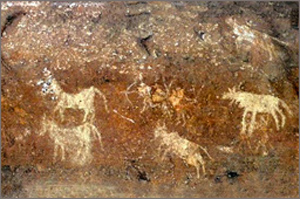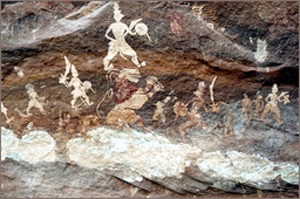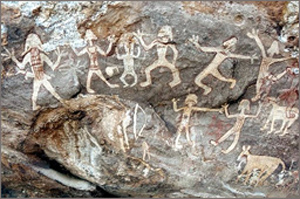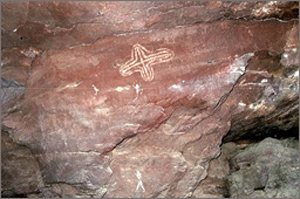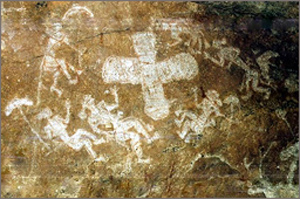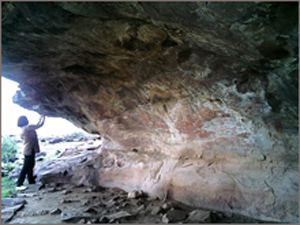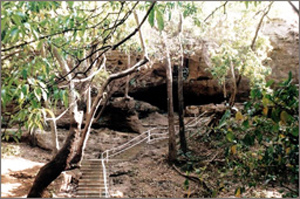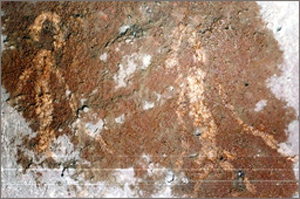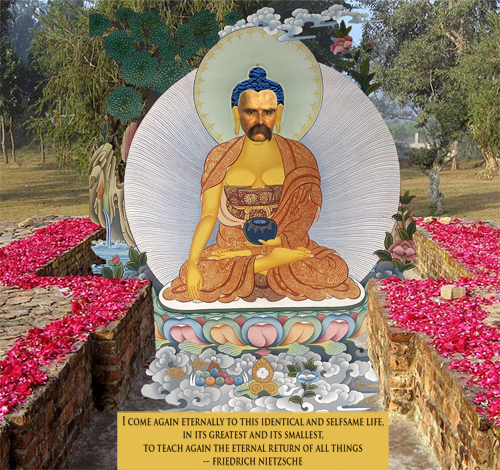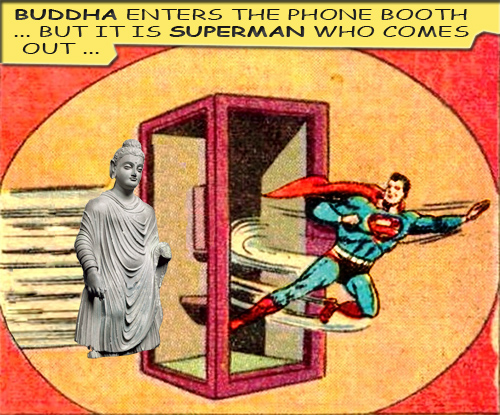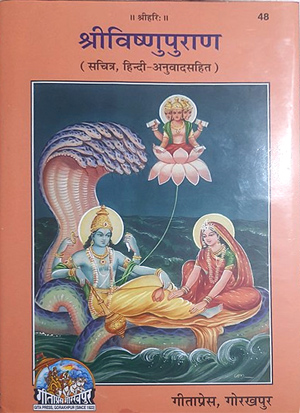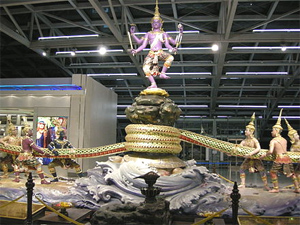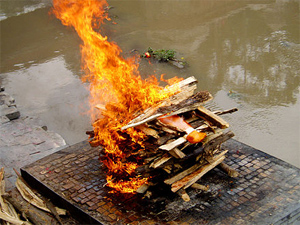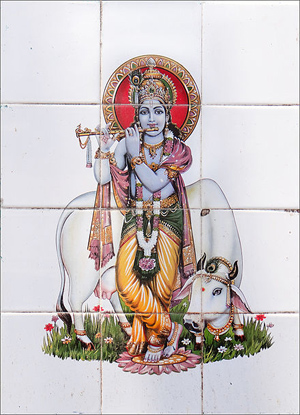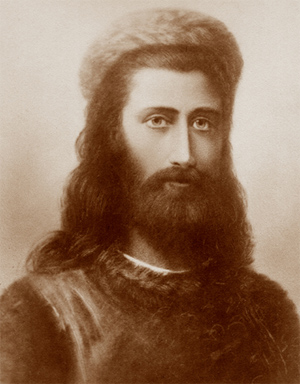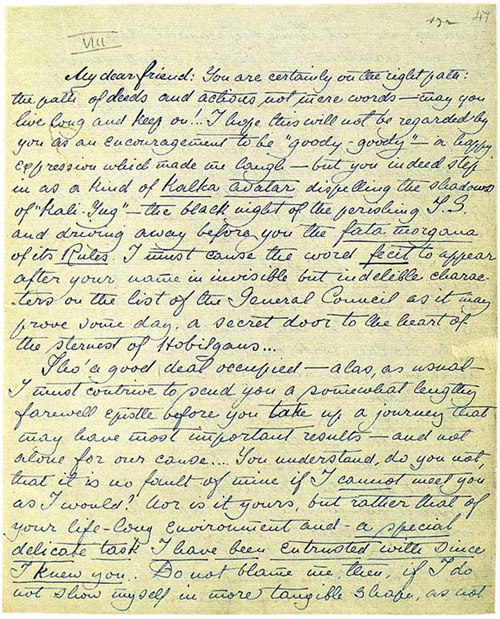Chronicle of Twenty-four Buddhas [Excerpt]
by Mingun Sayadaw
Edited and Translated by Professor U Ko Lay and U Tin Lwin, Yangon, Myanmar
https://www.wisdomlib.org/buddhism/book ... of-buddhas
The Great Chronicle of Buddhas: The State Buddha Sasana Council's Version, by the Most Venerable Mingun Sayadaw; Bhaddanta Vicittasarabhivamsa; Tipitakadhara Dhammabhandagarika; Agga Mahapandita; Abhidhaja Maharatthaguru, Translated into English by U Ko Lay U Tin Lwin
-- Volume 1, Part 1
-- Volume 1, Part 2
1 Buddha Dipankara
2 Buddha Kondanna
3 Buddha Mangala
4 Buddha Sumana
5 Buddha Revata
6 Buddha Sobhita
7 Buddha Anomadassi
8 Buddha Paduma
9 Buddha Narada
10 Buddha Padumuttara
11 Buddha Sumedha
12 Buddha Sujata
13 Buddha Piyadassi
14 Buddha Atthadassi
15 Buddha Dhammadassi
16 Buddha Siddhattha
17 Buddha Tissa
18 Buddha Phussa
19 Buddha Vipassi
20 Buddha Sikhi
21 Buddha Vessabhu
22 Buddha Kakusandha
23 Buddha Konagamana
24 Buddha Kassapa
1. DIPANKARA BUDDHAVAMSA
(The author discusses briefly the Myanma word Buddhavan derived from the Pali Buddhavamsa. Then he goes on to say as follows:) The definition of Buddhavamsa is this: ito hettha kappasatasahassadhikesu catusu asankhyeyyesu uppannanam pancavisatiya Buddhanam uppannakappadi paricchedavasena pavenivittharakatha Buddhavamso nama.
From this definition the meaning of Buddhavamsa should be understood as "a description and exposition of the lineage of the twenty-five Buddhas, who had come into being over the past four asankheyya and one hundred thousand aeons, with their thirty-two particulars such as the crores concerned, their names, clans, families, is Buddhavamsa."
Though the chronicle of all these Buddhas with their particulars such as the aeons, etc. is called Buddhavamsa, when each individual or them is spoken of, the same term Buddhavamsa is applicable to the life-story of each Buddha. (For example) though the word Sangha is a term for the whole Order or Noble Ones, each and every one of them can also be called Sangha.
Therefore it should be understood that in this section called Dipankara Buddhavamsa, the life story (with the aeon to which he belonged, etc.) of Buddha Dipankara will be dealt with.
In the Buddhavamsa Text, the account of Buddha Dipankara does not contain in detail the events that took place at the time of his conception and birth. Only this much is mentioned about him in the Sumedhakatha, Story of Sumedha.
Evam me siddhipattassa vasibhuwssa sasane
Dipankaro nama jino uppajji lokanayako.
Uppajjante ca jayante bujjhante dhmmadesane
caturo nimitte naddasim jhanarati samappito.
[The Bodhisatta Sumedha the Hermit says:] "When I have thus become accomplished in asceticism [Jhanas and Abhinnas] there appeared Buddha Dipankara, Lord of the whole world.
"Being totally absorbed in the bliss of Jhana, I have not seen the wondrous phenomena that took place on the four occasions of his conception, birth, Enlightenment and delivery of the First Sermon."
Thus the Buddhavamsa Text refers only briefly to the appearance of Buddha Dipankara in the story of Sumeda. It is only in the Buddhavamsa Commentary that we find the full story of Buddha Dipankara with details of events in serial order starting from the episode of his rebirth in the abode of Tusita Gods.
Four asankhyeyya and one hundred thousand aeons before the present Bhadda Kappa1 there appeared in one Saramanda Kappa the three Buddhas -- Tanhankara, Medhankara and Saranankara -- one after another. After that came an Antara Kappa, an aeon of decrease with the human life-span of one hundred thousand years. Then in the city of Rammavati reigned King Sudeva. During his reign Buddhisatta Dipankara was enjoying life in the celestial abode of Tusita after his fulfilment of the Perfections. Deities from the ten-thousand world-system approached him with a request, in compliance with which the Bodhisatta took conception in the womb of Sumedha, Queen of Sudeva, on the full-moon day of Asalha [June-July] when the moon was in conjunction with the planet of Uttarasalha. Having been tended upon by a great retinue and after ten full months the Bodhisatta was born.
At the moments of his conception and birth there appeared thirty-two portentous phenomena, such as trembling of the thousand world systems, etc.
(These thirty-two phenomena usually take place on the four occasions of every Bodhisatta's conception, birth, Enlightenment, and teaching of the First Sermon. These phenomena [are] common to all.
Bodhisattas will be described when we come to the Chronicle of Buddha Gotama. In the Buddhavamsa Commentary, however, these thirty-two phenomena and their subsequent happenings are elaborately told in the chapter on Bodhisatta Dipankara's conception.)
Thereafter Prince Dipankara was brought up in luxury, and when he came of age, he ascended the throne.
As a king he lived in three golden palaces -- Hamsa Palace (Hamsa Pasada), Heron Palace (Konca Pasada) and Peacock Palace (Mayura Pasada) -- by rotation for ten thousand years. There were about three hundred thousand well ornamented female attendants. His Chief Consort was Paduma and his son Prince Usabhakkhandha.
Enjoying a divine-like kingly life in the three palaces, Prince Dipankara went out to the royal garden to enjoy himself; on the way [he] saw an old man, a sick man and a dead man who were Deva messengers. Overcome by religious emotion (samvega), he returned from the garden and entered the city. When he wanted to go out again to the garden for the fourth time, he summoned his elephant-keeper and said: "Today I will visit the royal garden for sightseeing. Get the elephants ready." "Very well, Your Majesty," said the royal elephant-keeper and had eighty-four thousand elephants prepared. Dressed in a costume offered by Deva Vissakamma and accompanied by eighty-four thousand elephants and a large army of troops, he entered the garden, riding the state elephant. Having descended from the elephant's back, he roamed sightseeing all over the garden, sat on a cool and pleasant stone slab, and aspired to go forth from the world. Then Maha Brahma, an Arahat of Suddhavasa abode, brought the eight requisites and appeared at a place where he could be seen. Seeing the eight requisites, the Bodhisatta asked what they were; when told that they were the paraphernalia of a monk, he took off his royal attire and handed it over to the royal treasurer, cut of his hair with his sword, and threw it up into the sky.
Then Sakka, king of [the] Devas, took the hair knot in a golden receptacle and enshrined it in a cetiya [memorial] called Makuta; it is three yojanas [yojana - approx. 14 km.: 3 x 14 km. = 42 km. = 26 miles = 137,712 feet] in size and built of emerald stones on Mount Meru.
The Bodhisatta then put on the robes offered by the Brahma and threw up into the sky his old raiment which was received and enshrined by the Brahma in a cetiya (called Dussa), twelve yojanas in size [12 x 14 km. = 168 km. = 104 miles = 549,000 feet], in the Suddhavasa Brahma abode.
A crore [10 Million] of people who had heard of the prince's donning of the robe followed his example and became monks themselves.
Together with these monks who had thus followed in his footsteps, Bodhisatta Dipankara practised austerity called dukkaracariya. On the full-moon day of Vesakha on which he was to become a Buddha, He entered a town for alms-food. It was the day that townsfolk happened to be making pure milk-food for propitiating gods; nevertheless, the food was offered to the Bodhisatta and his one crore [10 million] of followers.
Having taken the milk-food, the Bodhisatta spent the daytime in sala grove of the neighbourhood and in the evening, leaving behind all his followers, headed alone for the great Bodhi Tree.
Enlightenment and Teaching of the Dhammacakka Discourse
On the way the Bodhisatta accepted eight handfuls of grass from an heretic, Sunanda by name, and no sooner had he spread out the grass at the foot of the Bodhi tree than the "Aparajita Pallanka, Unconquered Seat," fifty-three cubits [18 in. x 53 = 79.5 feet] in size, appeared.
(With regard to the size of the seat which was fifty-three cubits, some say the size means the height and others say it means the breadth as found in the Sub-Commentaries of the Inwa Period. These commentarial statements in detail will be dealt with when we come to the story of Buddha Gotama.)
Sitting cross-legged on the "Unconquered Seat", under the Bodhi tree (pipphala,) the Bodhisatta put forth energy of four levels2 and overcame Mara and his army; he gained Pubbenivasa Nana (Wisdom that enables one to know the series of previous existences) in the first watch of the night; Dibbacakkhu Nana (Wisdom that helps one see even the most subtle form from a far distance like a divine eye) in the middle watch; and contemplated in the last watch the doctrine of Paticcasamuppada, "Dependent Origination", in the forward order, revolving of the wheel of samsara and in the backward order, stopping of it; thereafter he entered upon the Fourth Jhana through Anapana Meditation; emerging from it and reflecting on the five aggregates, he discerned the fifty characteristics concerning rise and fall of these aggregates and developed Vipassana Insight, up to the stage of Gotrabhu Nana3 . As soon as the sun rose, this Vipassana development led to the penetration of the Path and Fruition of Arahatship, of all the attributes of a Buddha and to the incomparable Buddhahood which is supreme in the three worlds.
After attaining Buddhahood the Buddha passed seven days at each of the seven sites around the Bodhi Tree enjoying the bliss of Fruition (Phala-samapatti). Having granted the Brahma's request for his teaching, the Buddha delivered the First Sermon, Dhammacakkappavattana Sutta, at Sunandarama and one hundred crores [10 Million x 100 = 1 Billion] of humans, Devas and Brahmas realized the Four Truths.
At the time of his Enlightenment and that of his teaching the Dhammacakkappavatta Sutta, thirty-two portentous phenomena occurred.
These phenomena (on the four occasions) when Bodhisatta Dipankara was conceived, born, attained Buddhahood, and taught the First Sermon occurred unknown or unseen by Sumedha the Hermit as he was absorbed in the bliss of Jhanas. (This has been stated above.)
The Buddha's journey
After teaching the First Sermon, Buddha Dipankara set out on a journey for the benefit of humans, Devas and Brahmas; while staying at Sudassana Monastery in Rammavati at the invitation of the citizens, the Buddha went out to accept the alms-food offered by them; while he was partaking of the food there took place a violent earthquake as a result of Sumedha's contemplation of the Perfections; the people present on that occasion were frightened and asked the Buddha about the cause of the earthquake; on hearing from the Buddha that there was nothing to fear as the cause was Sumedha's contemplation of the Paramis, they visited and acclaimed him, who thereafter entered the forest. All this has been told in the story of Sumedha. What remains to be told is the following:
When the citizens of Rammavati had finished their offering of alms-food to Buddha Dipankara and his four hundred thousand bhikkhus, they paid obeisance to the Buddha with flowers, scents, etc., and assembled to listen to his sermon.
Dipankara Buddha then addressed the assembly:
1. Danam nama sukhadinam nidanam paramam matam
dibbanam pana bhoganam patitthati pavuccati.
"Dana should be understood as the noble cause of human, divine and Nibbanic happiness; it is said to be the basis of divine enjoyments".
"Beginning with these words the pleasant talk on the practice of dana (Danakatha) [almsgiving] was given".
2. Silam nam etam idhaloka-paraloka sampattinam mulam.
Slia means the root of various forms of prosperity in this life and the next.
In this and many other ways the talk on morality (Silakatha) was given in detail.
3. Next, Buddha Dipankara gave a talk on divine abodes (Saggakatha) to explain as to which sila [morality] leads to which divine happiness. "This divine abode is desirable, pleasant and delightful, and indeed happy. This abode provides constant merriment and gaiety. Catumaharajika Devas enjoy celestial happiness for nine million years in terms of human reckoning". In this way the benefit of heavenly attainment was taught.
4. After persuading, convincing and inspiring the people with this teaching so that they might be inclined to perform Dana and Sila, the Buddha proceeded to teach that even such heavenly bliss was not permanent and that one should not crave it very passionately. In this way the Buddha pointed out the disadvantages, unworthiness and foulness of sensual pleasures, and also the advantages of emancipation from them; he ended his discourse with a talk on Deathless Nibbana.
With this discourse given to the people, the Buddha established some of them in the Three Refuges, some in the Five Precepts, some in the Sotapatti-phala (Fruition of the 'Stream-Winner'), in the Sakadagamiphala (Fruition of the 'once Returner' in the Anagami phala (Fruition of the non-Returner). Some in the Arahatta-phala (Fruition of Arahatship). Some in the threefold knowledge, in the Sixfold Higher Knowledge, or in the eight attainments4; the Buddha then left the city of Rammavati and entered Sudassana Monastery.
Three occasions of the Buddha's teaching
(Dhammabhisamaya)
Having spent forty-nine days in the neighbourhood of the Bodhi Tree after his Enlightenment, Buddha Dipankara delivered the First Sermon of Dhammacakka at Sunandarama at the request of Maha Brahma and administered the Dhamma, Elixir of Immortality to one hundred crores [10 Million x 100 = 1 Billion] of Devas and men.
(This was the first Dhammabhisamaya.)
Next, knowing that his son Prince Usabhakkhandha had become intellectually mature, Buddha Dipankara gave a sermon and administered the Dhamma, Elixir of Immortality, to ninety crores [10 Million x 90 = 900 Million] of Devas and men headed by the prince (just like our Buddha taught his son Rahula the Cula Rahulovada Sutta that led him to Fruition of Arahatship).
(This is the second Dhammabhisamaya.)
Finally, after defeating the heretics near the sirisa tree [Albizia lebbeck] at the city-gate of Rammavati and displaying the Twin Miracle of water and fire, the Buddha taught the Abhidhamma, sitting on the stone slab of Pandukambala at the foot of [a] parichattaka tree [Parijaat tree, sacred baobab] in Tavatimsa Abode, and administered the Dhamma, Elixir of Immortality, to ninety crores [10 Million x 90 = 900 Million] of Devas and men headed by the Deva who in his previous existence had been the Buddha's mother Sumedha Devi.
(This is the third Dhammabhisamya.)
Three occasions of the Disciples' meeting
(sannipata)
There were three occasions of meeting of Buddha Dipankara's Disciples, one of them being Sunandarama where Arahats numbering about one hundred thousand crores [10 Million x 100,000 = 1 Trillion] from all regions specially met for the first time.
(This was the first sannipata.)
Next, the Disciples' meeting took place on Mount Nirada. Once while wandering from place to place with four hundred thousand bhikkhus, Buddha Dipankara arrived at the delightful Mount Narada which was full of marvellous features.
The mountain was occupied by a divine yakkha [yaksha] named Naradeva and people brought annually even human beings as sacrificial offering in his honour.
Seeing that the people were endowed with the merits of their past deeds to rely upon, the Buddha ascended the mountain alone leaving behind his bhikkhus. Thereupon the yakkha became furious and caused the trembling of the mountain to scare the Buddha away. On seeing the Buddha serene and undisturbed although he had used all his might to frighten the Buddha, it occurred to him thus: "Ths great monk is indeed wonderful! Powerful indeed is he! The evil consequences of what I have done will come back to me. There is no refuge for me other than this great monk. Like a man who slips and falls onto the ground has to rely on the same ground to get up, I will now take refuge in this very monk."
With this thought he bowed before the Buddha touching with his head the Buddha's feet, the soles of which were adorned with one hundred and eight signs; he also begged the Buddha's pardon and took refuge in him. Then the Buddha gave him Danakatha, Silakatha, etc. in serial order at the end of which Naradeva and his retinue of ten thousand yakkhas were established in Sotapattiphala.
On the day Naradeva thus became a Sotapanna [stream-enterer], people from all over Jambudipa [Jambudvipa] brought a man from each village to make sacrificial offerings to the yakkha. They also brought with them large quantities of sesamum, rice, beans of various kinds, butter, ghee, honey, molasses, etc. Naradeva handed back all these food-stuffs to the people and entrusted the men, originally meant for sacrifice, to the Buddha.
Then the Buddha ordained these men by the "Ehi bhikkhu" formula and helped them all achieve Arahatship within seven days: on the full-moon day of Magha (January-February), staying in the middle of one hundred crores [10 Million x 100 = 1 Billion] of Arahats, the Buddha gave instructions of Patimokkha at the Disciples' meeting of four features.
An "Ehi bhikkhu' monk does not need to seek the bowl, robes, etc. to become a recluse; on being invited by the Buddha "Come, O monk", his appearance of a lay man vanishes, and he assumes the appearance of a monk of sixty years' standing in the Order.
The four features of a Disciples' meeting are:
(1) all participants are "Ehi bhikkhu monks
(2) all participants are winners of Chalabhinna (Sixfold Higher Knowledge);
(3) all participants come together without being summoned by the Buddha, and
(4) the congregation takes place on the full moon of the month, the fifteenth day Uposatha.
The above-mentioned story of the divine yakkha Naradeva comes from the Buddhavamsa Commentary.
In the Buddhavamsa Text, however, just this simple narration is given: "Again, when Buddha Dipankara had gone into quietude on the top of Narada Mountain, there gathered one hundred crores [10 Million x 100 = 1 Billion] of Arahats who were free from defilements."
(This was the second sannipata.)
Once Buddha Dipankara observed vassa (rains retreat) on Mount Sudassana. When the vassa was over, people of Jambudipa came to the mountain to celebrate their annual mountain-top festival. They then happened to encounter the Buddha, listened to his sermon and, were so delighted with it that they became monks. When the Buddha taught them again on the Maha Pavarana Day (the full moon of Assayuja (September-October) the newcomers won Arahatship through the stages of Vipassana Insight and of the Path as a result of their contemplation of conditioned things in the three planes of existence. The Buddha held Pavarana ceremony5 [Pavarana (Sanskrit: Pravāraṇā) is a Buddhist holy day celebrated on Aashvin full moon of the lunar month. It marks the end of the 3 lunar months of Vassa, sometimes called "Buddhist Lent."] with ninety thousand crores [10 Million x 90,000 = 900 Billion] of Arahats.
(This was the third sannipata.)
The ordinary sermons given by Buddha Dipankara led to realization of the Four Truths (attainment of Liberation) by thousands of beings, by countless individuals.
At that time, the thoroughly purified Teaching of the Buddha spread far and wide; it was understood by innumerable beings -- humans, Devas and Brahmas; it was full and complete with exhortation on noble Sila and such virtues.
Buddha Dipankara, the Knower of the Three Realms, was always attended upon by four hundred thousand Arahat-Disciples, who are immensely powerful with the sixfold Abhinna.
During the Dispensation of Buddha Dipankara, those who died as learners (sekkhas) while trying for Arahatship in vain become the scorn of all.
The teaching of Buddha Dipankara spread throughout the whole world and remained glorious for ever with Arahats who had extirpated their foe, namely defilements, and who were not disturbed by various sense-objects, and thus free of impurities and asavas.
Particulars of Buddha Dipankara
Buddha Dipankara's birth place was the city of Rammavati.
His father was King Sudeva and his mother Queen Sumedha.
His two Chief Disciples were Sumangala Thera and Tissa Thera.
His attendant was Sagata Thera.
His two female Chief Disciples were Nanda Theri and Sunanda Theri
His Bodhi Tree was a pipphala tree.
His male supporters were Tapussa and Bhallika.
His female supporters were Sirima and Sona.
His height was eighty cubits. [18" x 80 = 120 feet] He was a splendour like a pillar of blazing light and a great sala tree in full bloom.
(The advantage of giving these particulars is this: Had they not been given, he might have been mistaken for a Deva, Mara, a demon, or a Brahma. One could think, it is not strange at all that the wonderful events should occur to such a divine being. This would have led to the wrong notion that it was not worthwhile to listen to his Teaching. Then there would have been no possibility of realization of the Truth (attainment of Liberation). On the other hand, the particulars would give rise to the right belief that "Powerful thus is indeed a human being." With this belief beings would listen to his Teaching and could understand the Truth (or could attain Liberation. Hence such details.)
Buddha Dipankara's rays spread by themselves (i.e. without his exercising of power) to all the directions reaching twelve yojanas. [12 x 14 km = 168 km = 104 miles] His life-span was one hundred thousand years.
(This much is given in the Pali Text.)
There are also some more particulars in the Commentaries which are not contained in the Text but which, the Commentaries state, must be told.
While leading a lay man's life, Buddha Dipankara had three palaces: Hamsa, Konca, and Mayura.
He had three hundred thousand female attendants.
His Chief Consort was Paduma Devi, his son Usabhakkhandha.
The duration of his reign was ten thousand years.
When he renounced the world he went forth on an elephant. When he became Buddha he lived at Nandarama (Nanda Park).
Living throughout such a long period, Buddha Dipankara saved large numbers of beings (from suffering).
Having made the three divisions of the True Dhamma such as Learning (Pariyatti), Practice (Patipatti) and Penetration (Pativedha) shine forth throughout the world, and having liberated beings, Buddha Dipankara and his Disciples realized flnal Peace the way a mass of fire went out after blazing with bright flames.
Contemplation on impermanence, etc.(samvega)
The glory of that Buddha Dipankara, his assemblage of four hundred thousand Arahats, etc. who were all his Disciples, the signs on both his feet -- all had ceased to exist. Impermanent are all conditioned things! They are indeed insubstantial!
Erection of a cetiya
In this way Buddha Dipankara who had penetrated all the Four Noble Truths without exception attained Pannibbana at Nandarama Park. In the same Park was erected a cetiya, thirty yojanas in height [14 km. x 30 = 420 km. = 260 miles = 1,372,800 feet] and dedicated to Buddha Dipankara. It was of powdered red orpiment mixed with oil and butter, and in it were enshrined the Buddha Dipankara's relics which were in an indestructible and undispersed mass, a natural phenomenon common to all long-lived Buddhas. People of Jambudipa came together and completed the cetiya with decorations of seven kinds of gems.
Here ends Dipankara Buddhavamsa.
1. Bhadda Kappa: see p 12, and for kappa in general, see pp 4 ff. Vol 1, Part 1, Anudipani.
2. Energy of four levels: the levels where one would be reduced to (i) skin, (ii) sinews, (iii) bones and (iv) where ones flesh and blood would dry up. See also Vol 1, Part 1, Anudrpani, pp 238-239.
3. Gotrabhu Nana: the wisdom that helps one cut off the heritages of kama- consciousness and evolve the lineage of the Rupa-class of exalted consciousness.
4. Eight attainments: eight samapatti-attainments of four Rupa Jhanas and Arupa Jhanas.
5. Formal ceremony concluding the rains-retreat in which each bhikkhu invites criticism from his brethren in respect of what has been seen, heard or suspected about his conduct.

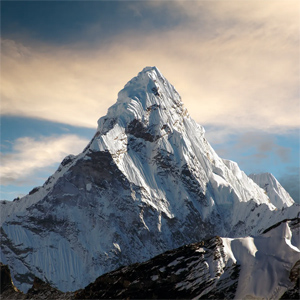
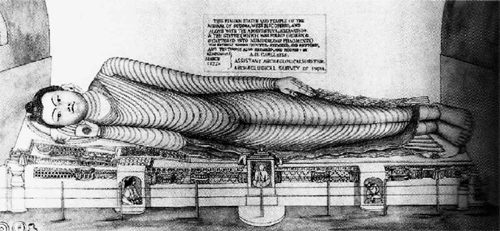
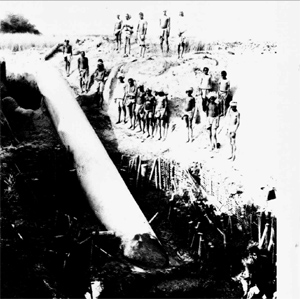
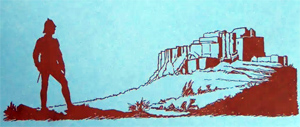
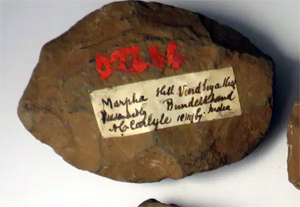
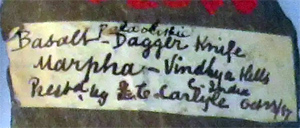
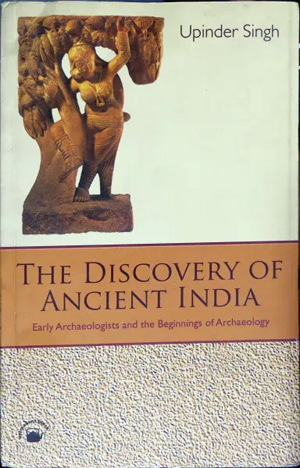
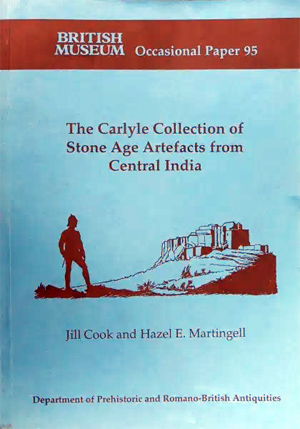
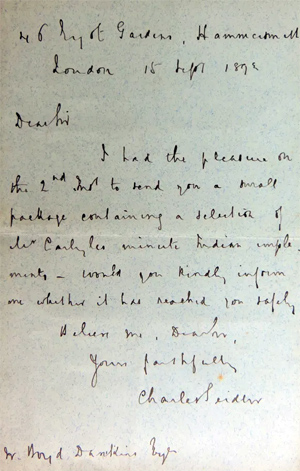
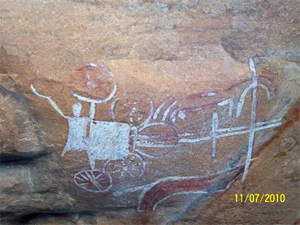
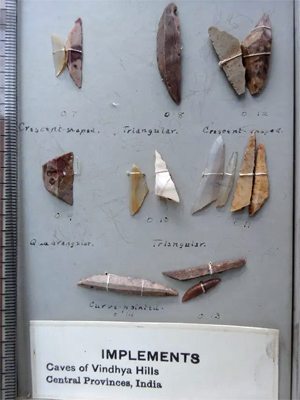
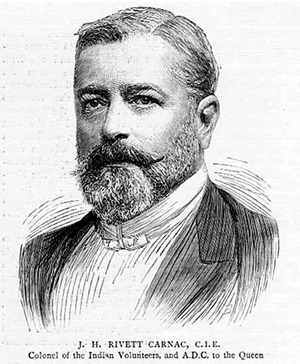
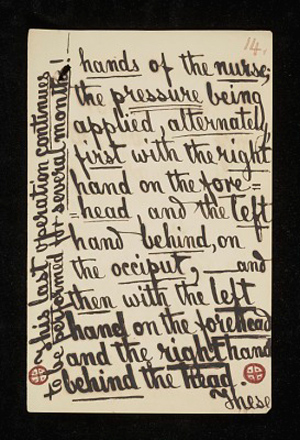

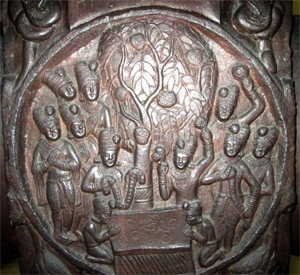
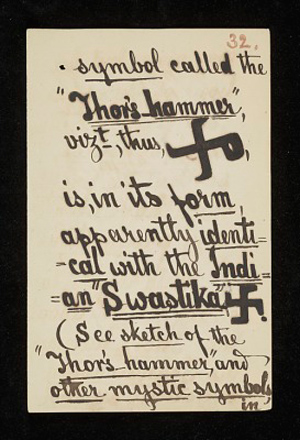


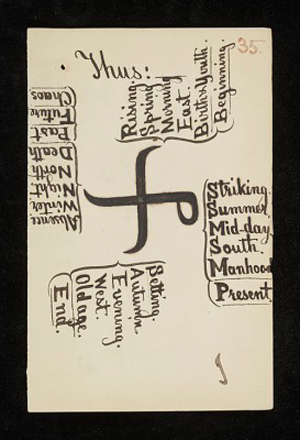

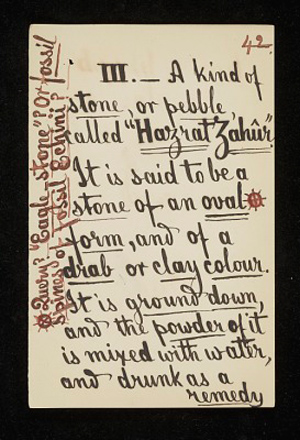

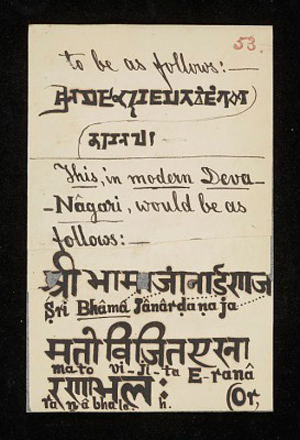

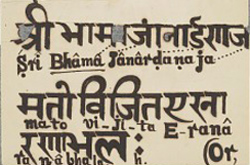
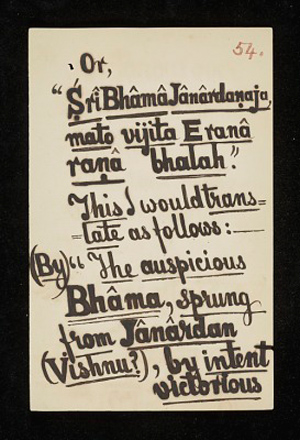
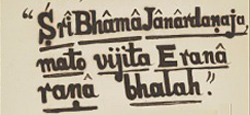
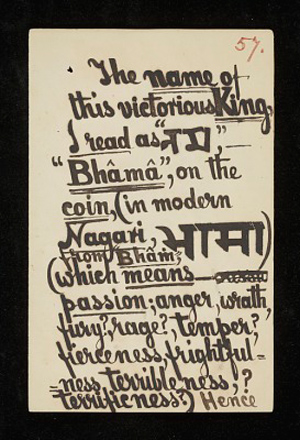


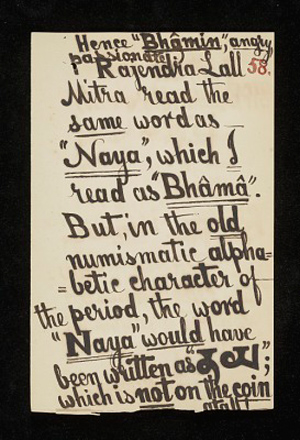

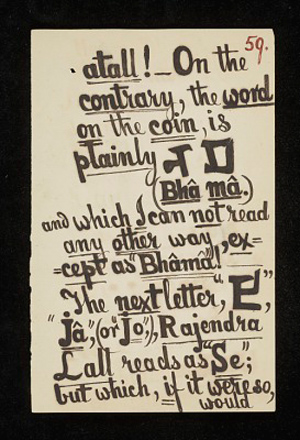


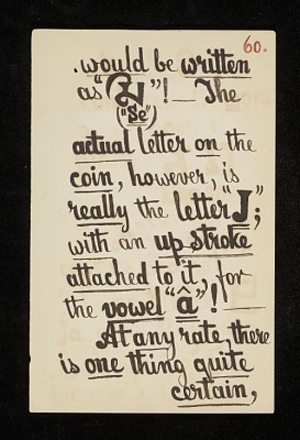

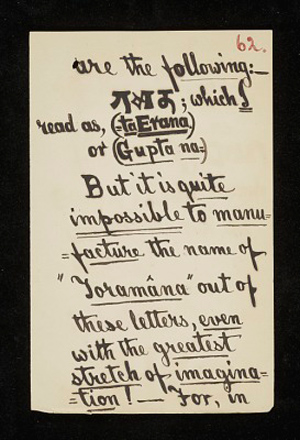

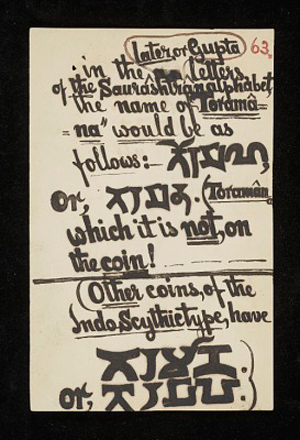




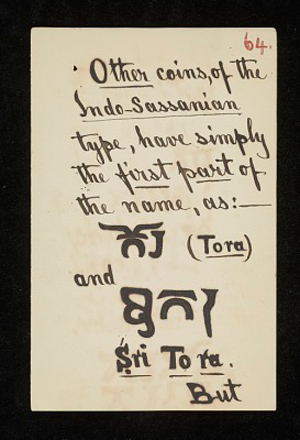


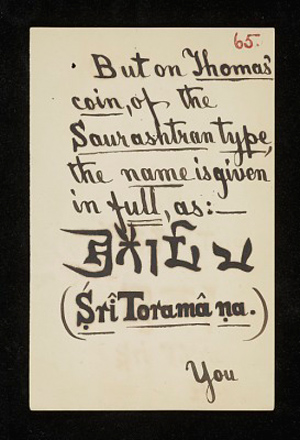

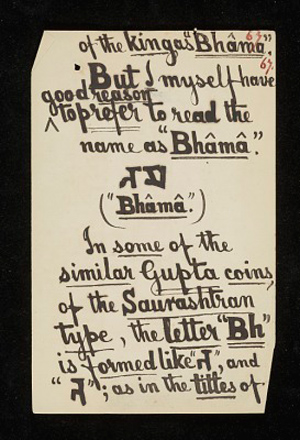



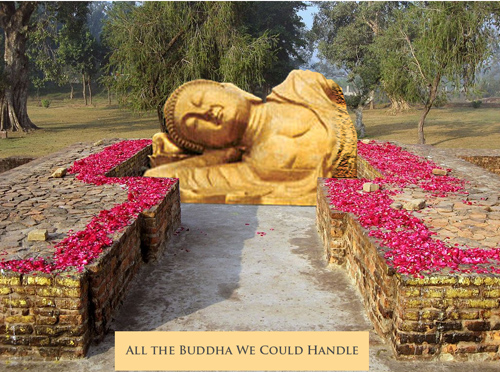
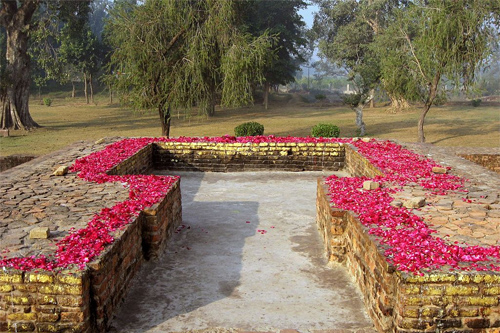
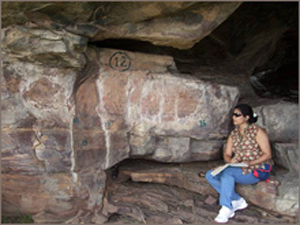
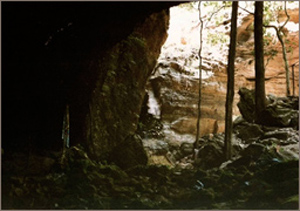
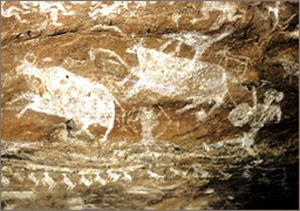
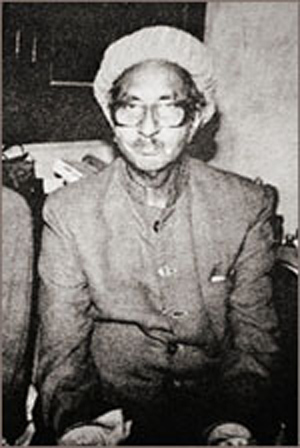
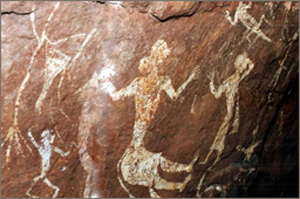
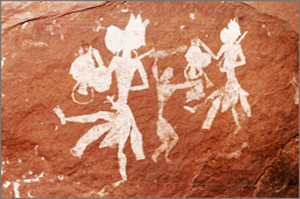
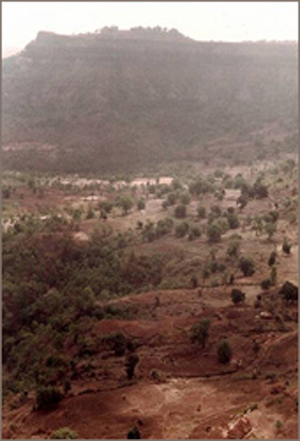
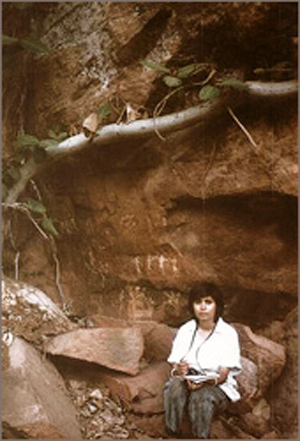
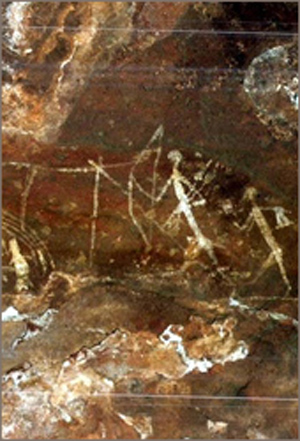
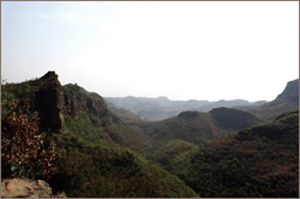
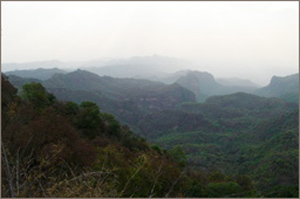
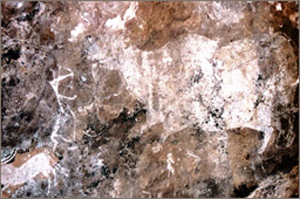
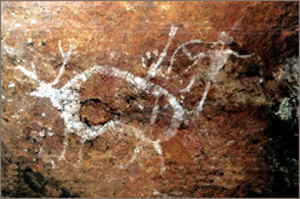
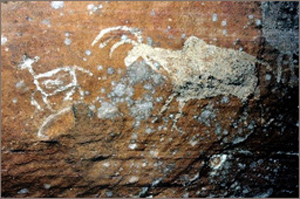
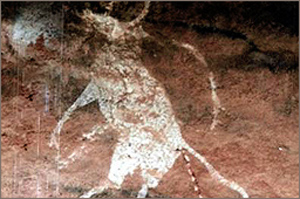
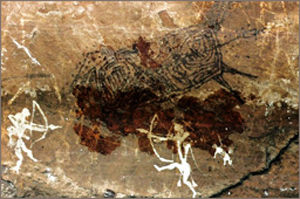
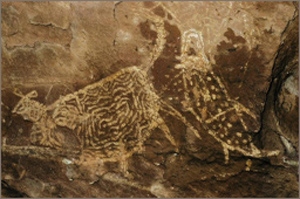
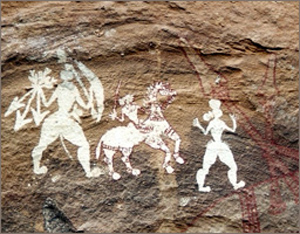
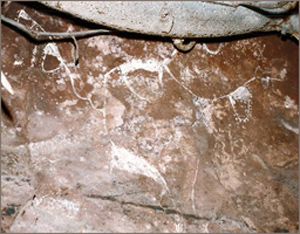
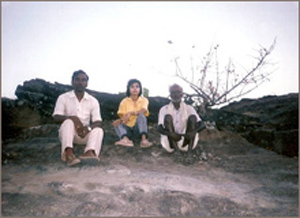
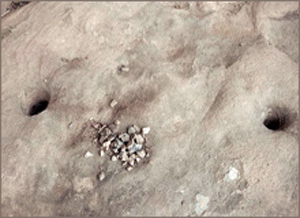
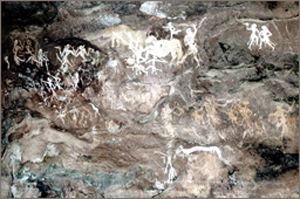
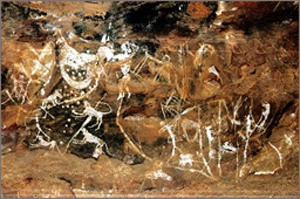
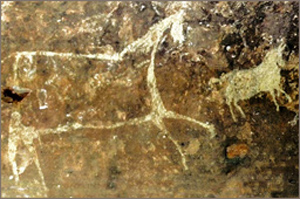
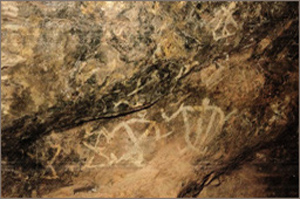
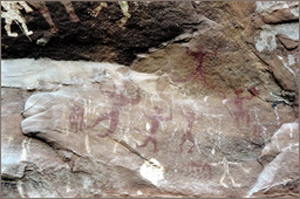
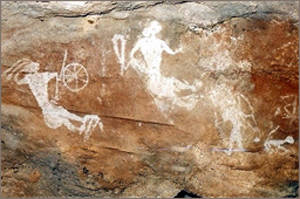
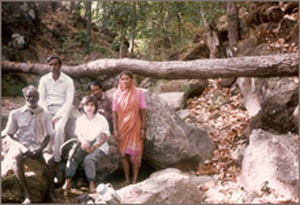
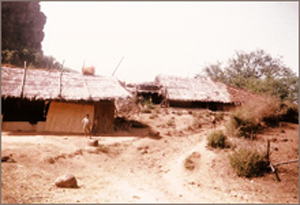
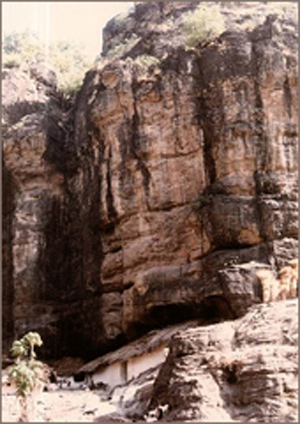
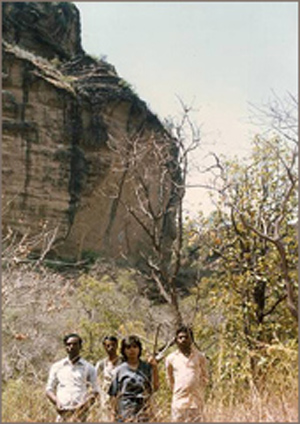
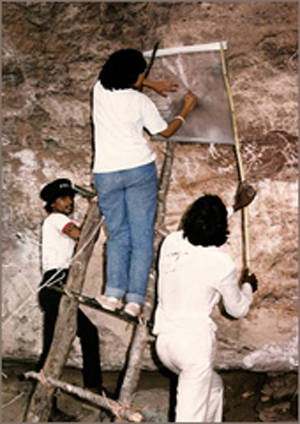
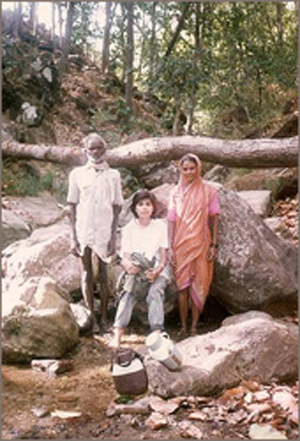
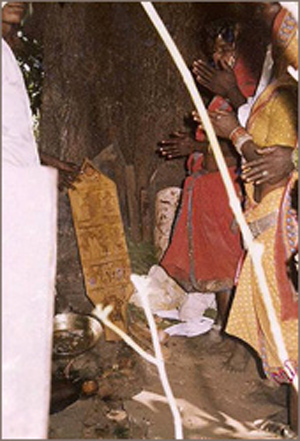
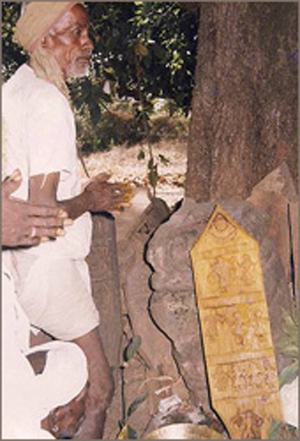
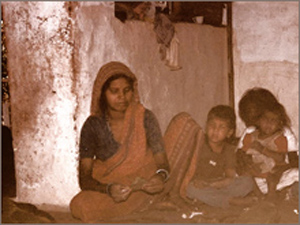
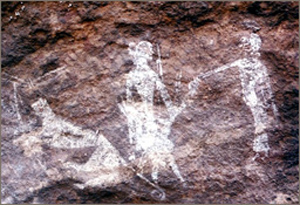
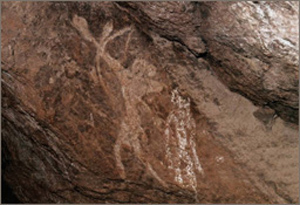
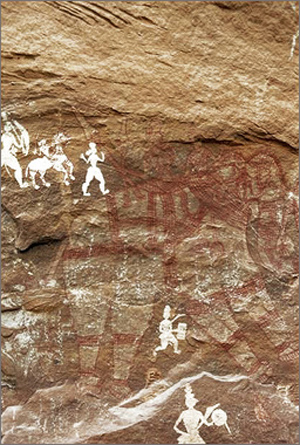
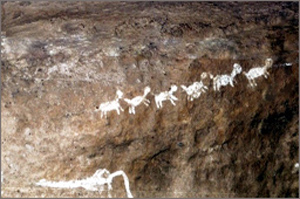
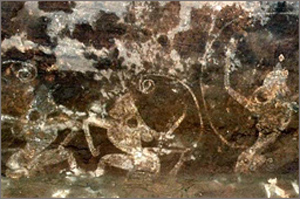
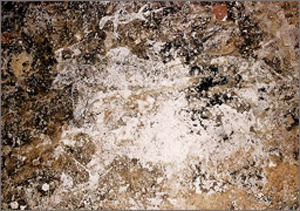
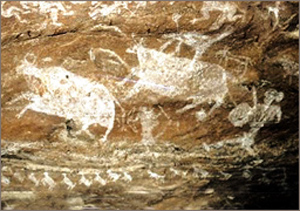
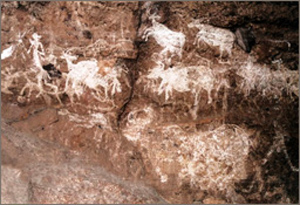
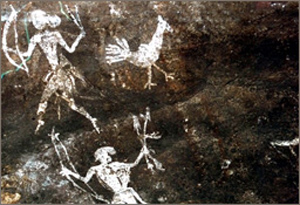
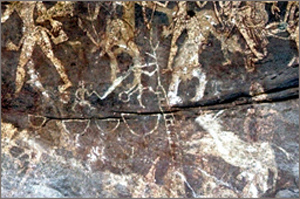
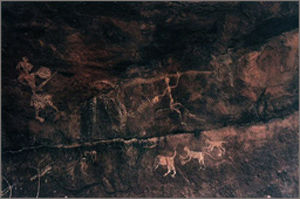
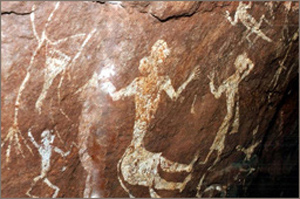
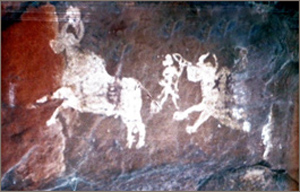
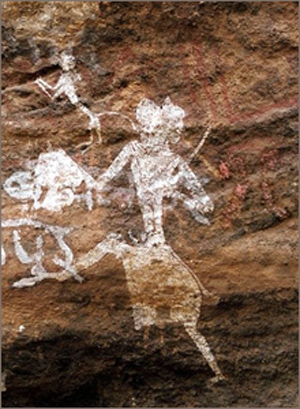
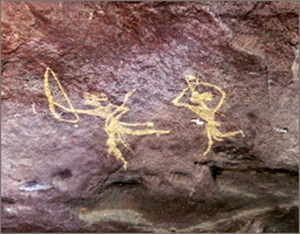
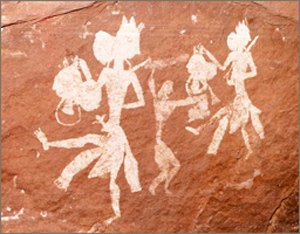
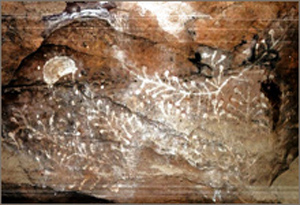
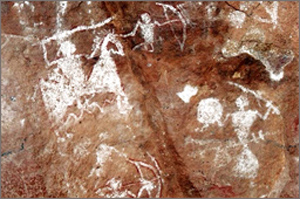 x]
x]